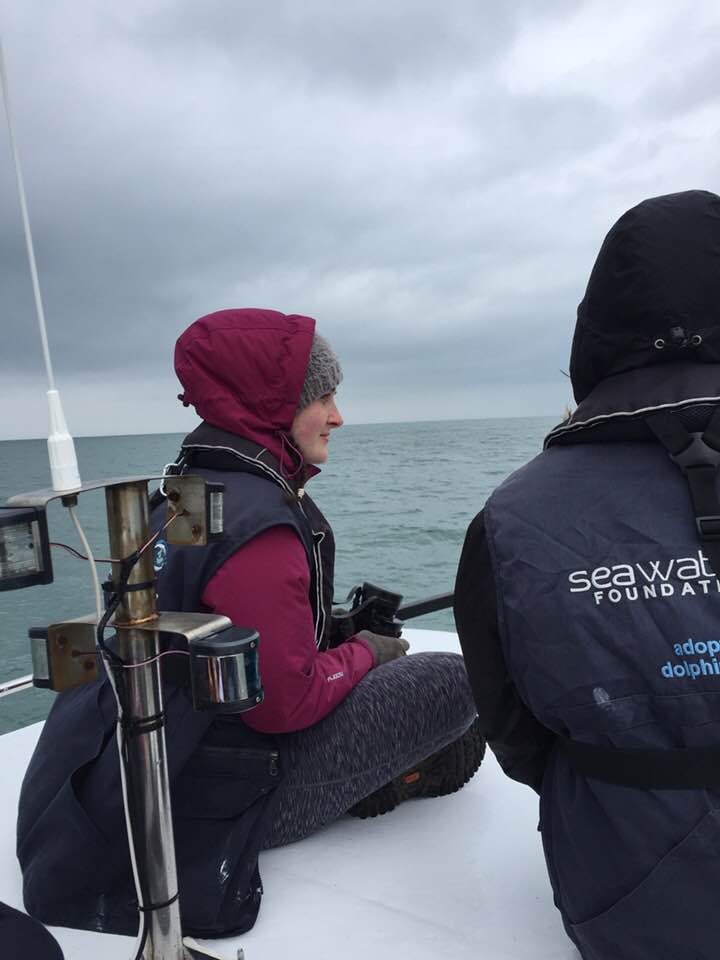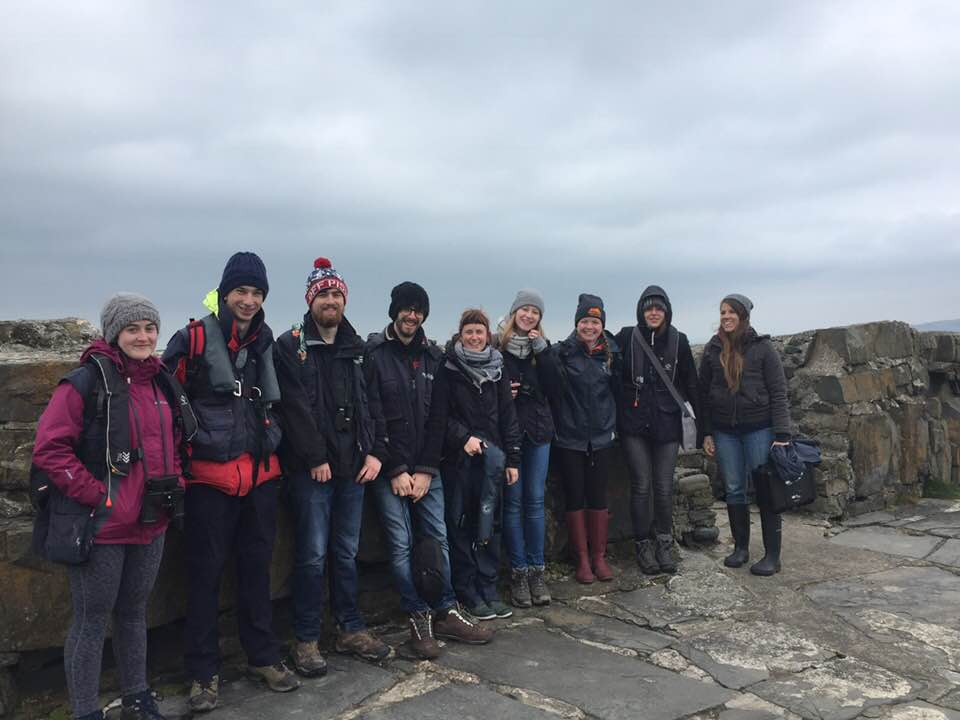This year Sea Watch has opened again its door to young, aspiring marine biologists to join the Cardigan Bay team for one or two weeks at a time to get their first taste for what lies ahead of them. Recently, the New Quay team was joined by GCSE student Beatrice Price, who assisted the team in all aspects of field and office work, ranging from collecting data from land to assist during boat trips. Read on to find out more about her experience!
Hello, my name is Beatrice Price. I love Biology and am hoping to read Biological Sciences at university.
I have recently had a week of work experience at Sea Watch. I needed some work experience but it was very difficult to find any organisation or company that would take on anybody younger than 18, and as I am 17 I was very grateful and excited to join Sea Watch for a week during April. At first I was a little anxious about meeting everybody as I didn’t know anyone, however everybody was so welcoming and friendly that I needn’t have worried.
Before I came to Sea Watch I didn’t know anything about cetaceans, but by the end of the first day I knew how to identify the different species of whales, dolphins and porpoises in Cardigan Bay and how to effectively use a high quality camera. On the second day, the Sea Watch team and I went out on a boat trip to see if we could see any bottlenose dolphins or harbour porpoises in the Bay. As we were doing our casual watch, we were allowed to go and sit on the roof of the wheelhouse to record some data and sure enough there was a pod of about 10 adult dolphins and a calf. We could only see the rise and fall of their dorsal fins at first but after about 5 minutes they were all leaping out of the water and bow-riding – it was such a spectacular sight.
In the following days of my week, I learnt many different skills from how to use a GPS to how to accurately enter in the findings we had made to the archives on the computer. I also learnt how to identify the different bottlenose dolphins in the area using the photo-identification technique, which is important for the discovering of which dolphins are in the area. During data collection from the roof of the wheelhouse I also learnt how to distinguish between positive and negative responses that dolphins display in response to boat activities.
In the last days I spent with the staff and interns at Sea Watch we also went on a walk up the cliffs from where we could follow a mother and calf pair who were roaming around the area for white a long time.
Thank you everyone at Sea Watch, I had such a great time, I would definitely do it all over again!
Bea


























